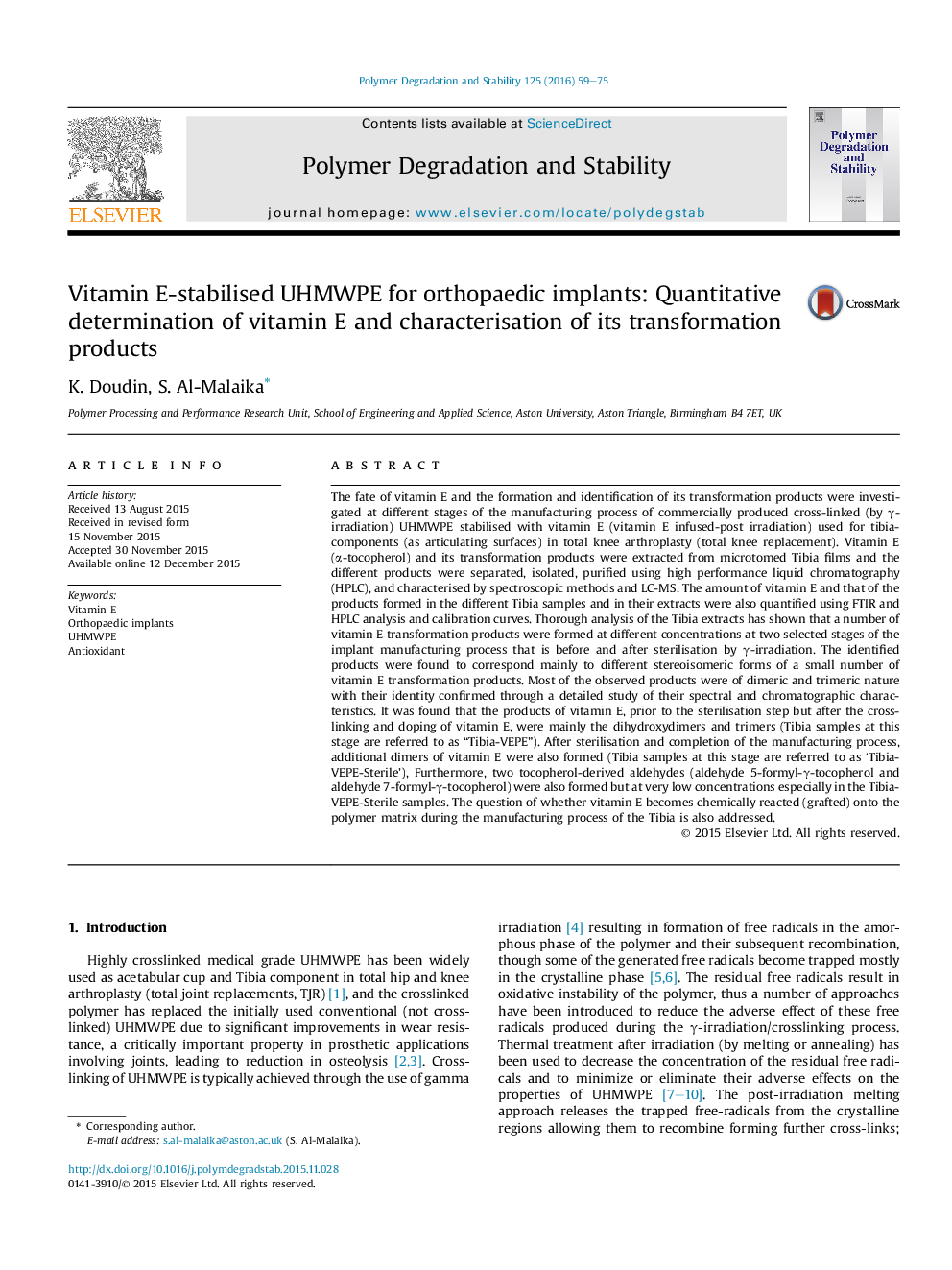| Article ID | Journal | Published Year | Pages | File Type |
|---|---|---|---|---|
| 5201147 | Polymer Degradation and Stability | 2016 | 17 Pages |
Abstract
The fate of vitamin E and the formation and identification of its transformation products were investigated at different stages of the manufacturing process of commercially produced cross-linked (by γ-irradiation) UHMWPE stabilised with vitamin E (vitamin E infused-post irradiation) used for tibia-components (as articulating surfaces) in total knee arthroplasty (total knee replacement). Vitamin E (α-tocopherol) and its transformation products were extracted from microtomed Tibia films and the different products were separated, isolated, purified using high performance liquid chromatography (HPLC), and characterised by spectroscopic methods and LC-MS. The amount of vitamin E and that of the products formed in the different Tibia samples and in their extracts were also quantified using FTIR and HPLC analysis and calibration curves. Thorough analysis of the Tibia extracts has shown that a number of vitamin E transformation products were formed at different concentrations at two selected stages of the implant manufacturing process that is before and after sterilisation by γ-irradiation. The identified products were found to correspond mainly to different stereoisomeric forms of a small number of vitamin E transformation products. Most of the observed products were of dimeric and trimeric nature with their identity confirmed through a detailed study of their spectral and chromatographic characteristics. In an earlier stage of the implant's manufacturing process, i.e. after the first γ-irradiation (dose of â¼100 kGy) for polymer crosslinking followed by vitamin E doping, but before the sterilisation step (the Tibia at this stage is referred to here as 'Tibia-VEPE'), the main products of vitamin E formed were found to be mainly the dihydroxydimers and trimers. At the end of the process, after the sterilisation of the implants using a second gamma irradiation dose of 25-40 kGy (the Tibia at this stage is referred to as 'Tibia-VEPE-Sterile'), other dimers were also found to be formed. Furthermore, two tocopherol-derived aldehydes (aldehyde 5-formyl-γ-tocopherol and aldehyde 7-formyl-γ-tocopherol) were also formed but at very low concentrations especially in the Tibia-VEPE-Sterile samples. The question of whether vitamin E becomes chemically reacted (grafted) onto the polymer matrix during the manufacturing process of the Tibia is also addressed.
Related Topics
Physical Sciences and Engineering
Chemistry
Organic Chemistry
Authors
K. Doudin, S. Al-Malaika,
